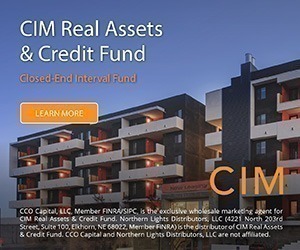James Sprow | Blue Vault
Introduction
Back in August 2023, Blue Vault published an article entitled “A Curious Look at Commercial Real Estate Cap Rates.” In that article, we explained how cap rates are both a determinant of property values and a result of property values. We actually said, “The fact is cap rates do not determine market values and market values do not determine cap rates.” The second statement may seem like a contradiction to the first statement, but it’s important to understand both within the real estate market context. That article concluded with the following observations:
•Cap rates can be thought of as both the result of market values and a determinant of market values. They are useful in comparing values and estimating values. In simple terms, they are one measure of the combined effects of growth projections, risk assessments and market interest rates.
•Implied cap rates can be estimated from current net operating income and market values, but there are potential lags involved and required estimates of future growth. The changes in market interest rates and cap rate estimates reveal that lags are present.
•Different asset types will have different median cap rates, and observing cap rates over time reveals how different asset types have different NOI growth estimates, risk estimates and volatility.
In that article, we explained how cap rates can be defined as the discount rate that, when applied to future net operating cash flows, gives an estimate of the value of a property or portfolio value. The discount rate or cap rate will be the sum of a “risk-free rate” plus a “risk premium.” In simple terms, a “risk-free rate” can be today’s interest rate or yield on a Treasury security, such as a 10-Year Treasury bond. The “risk premium” is an additional required rate of return that will vary with the market’s perceived risk of investing in an asset given the uncertainty or expected volatility of its future cash flows. Those future cash flows are estimated or modeled using net operating income (NOI).
The Impact of Interest Rates on Cap Rates
Treasury bond yields have risen dramatically over the past two years, with 10-year bond yields reaching the highest levels since 2006. If we consider the yield on Treasury securities as a reasonable proxy for the risk-free rate, then it makes sense that cap rates in real estate markets should also be increasing dramatically. However, other factors influence the risk premium that investors require to be willing to invest in commercial real estate. If those other factors were to be constant, cap rates would be rising right along with rises in Treasury bond yields. However, those factors can never be assumed to remain constant. For example, commercial real estate competes with a myriad of other investment choices for the dollars of investors. When yields or expected returns available from other investment types rise, the additional returns expected from real estate investments must also rise to remain competitive. Translated, that means cap rates must increase.
Cap Rates in an Inflationary Environment
Do inflationary periods cause the spread between interest rates and cap rates to expand? In other words, do investors require a higher risk premium when the rate of inflation is high? Surprisingly, cap rate spreads over the yields on Treasury notes often compress during periods of higher inflation. Even though cap rates and interest rates are correlated, there have been periods, even decades of historical data, that contradict the assumption that inflation and higher interest rates cause spreads to rise. This is important to keep in mind in today’s markets, because the U.S. is experiencing both high interest rates and higher rates of inflation.
Enter Supply and Demand Factors
Recent articles about today’s cap rate environment for different asset classes often focus on supply and demand within an asset class. One could correctly state that supply and demand are upstream from cap rates. That is, other things equal, when the supply/demand balance is changing, the impacts can be observed in property values, and changes in property values will change cap rates. For example, when supply within a specific property sector increases, holding demand constant, we would expect asking prices to fall, other things equal. Days on the market will increase and prospective sellers will have to adjust their price expectations or continue to hold the property. Another indicator of changes in the supply/demand equation will be occupancy rates. When occupancy rates change, they act as a barometer of relative supply and demand. Downstream from occupancy rate changes are changes in NOI, meaning as occupancy rates change, property incomes change, and as NOI changes, cap rates change.
Another indicator for some property types, particularly those with adjustments to lease rates that can be made monthly, or even daily in the case of hospitality properties, is market lease rates. When supply increases relative to demand, lease rates will decline or hold steady. The effect on NOI from changing leasing rates can be a factor in changing cap rates.
What to Look for in Market Indicators
Five common metrics available to investors in commercial real estate for each asset type are as follows:
1.Vacancy or occupancy rates within the sector
2.Asking rents or lease rates
3.Deliveries of additional square footage or units and the development pipeline
4.Net absorption of inventory
5.Property sales rates ($ volume and price psf)
Sectors that have performed well in terms of total returns to investors over the past few years, such as industrial, multifamily, self storage and data centers, for example, can be impacted by the prospects of increased supply and higher vacancy rates. These supply and demand factors can have a significant impact on future returns, and the prospects of lower future returns will be reflected in cap rates. That is, investors that anticipate greater supply in a particular sector or region, based upon development pipelines, for example, will adjust their cap rates when valuing potential investments. This has already been observed in each of the out-performing sectors mentioned above, to some extent.
Future Looks at Market Cap Rates
In our next article we will look at cap rates in different sectors of the commercial real estate market. Cap rates and their spreads over Treasury yields indicate investor demand and return expectations which differ, sector by sector, because of the sector-specific factors mentioned above.
Sources: A Curious Look at Commercial Real Estate Cap Rates – Blue Vault (bluevaultpartners.com)











